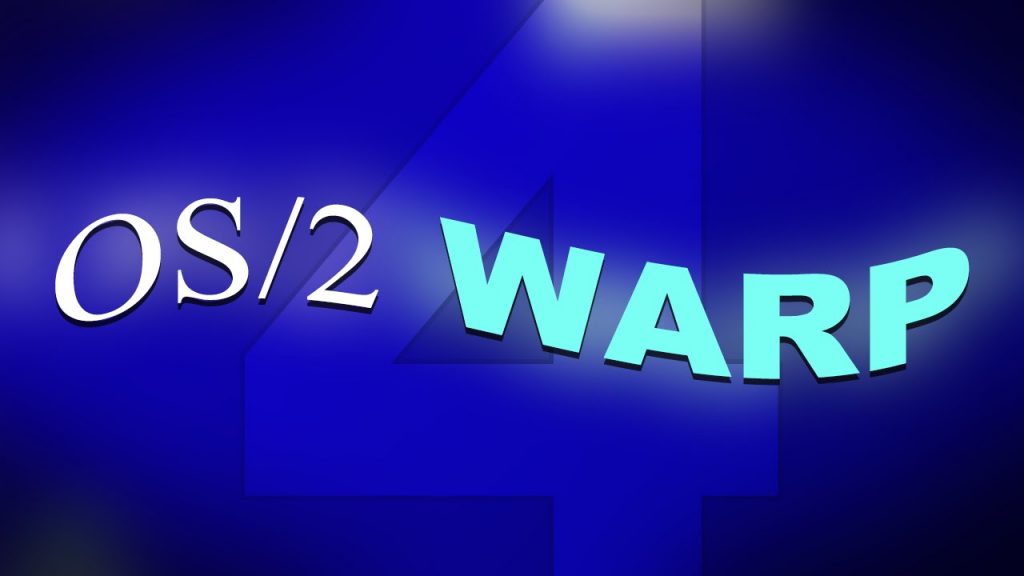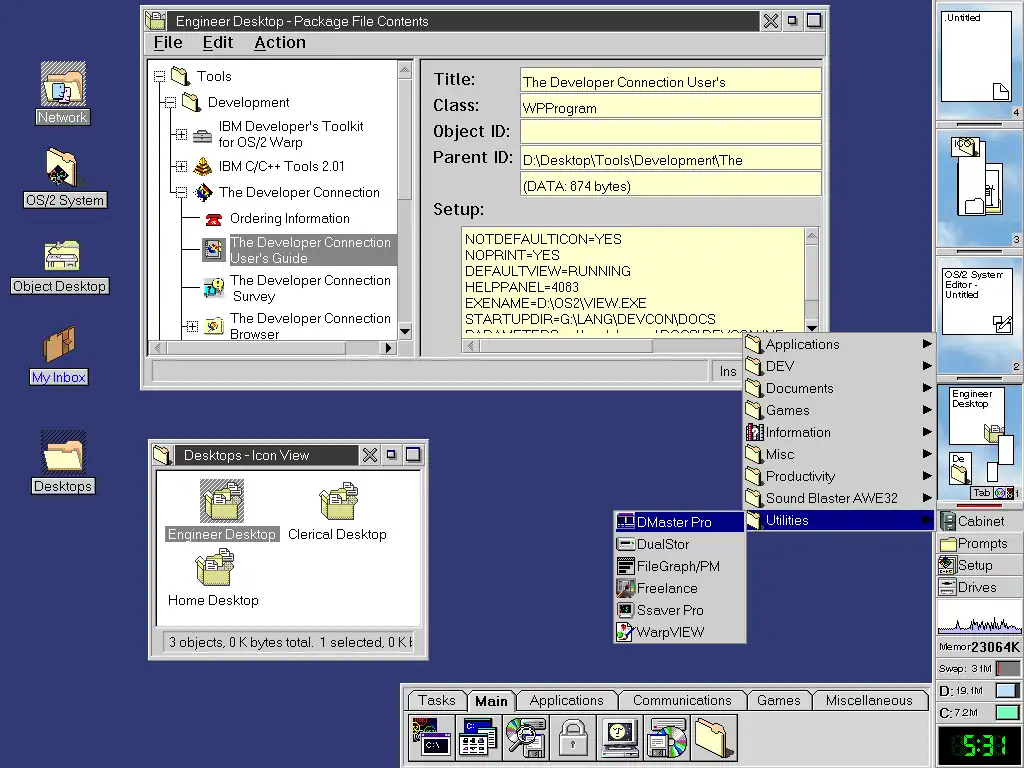OS/2, once heralded as the future of computing, is a 32-bit operating system originally co-developed by IBM and Microsoft. Aimed at surpassing MS-DOS, OS/2 was designed with multitasking and improved graphics in mind, marking a significant advancement in operating system technology. This article delves into the rich history of OS/2, exploring its development, key features, challenges, and legacy.
From its ambitious beginnings to its influence on contemporary operating systems, we provide an in-depth look at OS/2’s journey through the years, making this article a comprehensive resource for anyone interested in the evolution of computer operating systems.
Table of Contents:
- The Genesis of OS/2
- Key Features and Innovations of OS/2
- The Split Between IBM and Microsoft
- OS/2’s Market Performance and Challenges
- The Legacy and Influence of OS/2
- OS/2 in the Modern Era
- References
1. The Genesis of OS/2
Collaboration Between IBM and Microsoft
The development of OS/2 marked a significant moment in tech history, born from a collaborative effort between two giants: IBM and Microsoft. In the mid-1980s, these companies joined forces with a shared vision to create an operating system that would surpass the limitations of the then-popular MS-DOS. This partnership combined IBM’s deep hardware expertise with Microsoft’s software prowess, setting the stage for an ambitious project that aimed to redefine personal computing.

Initial Goals and Design Philosophy
OS/2 was conceptualized with several key goals in mind:
- Advanced Multitasking: To support complex computing tasks simultaneously, a leap beyond the capabilities of MS-DOS.
- Robustness and Stability: Aiming for an operating system that could handle demanding business applications reliably.
- Forward Compatibility: Ensuring the system could evolve alongside rapidly advancing computer hardware.
The design philosophy centered on creating a user-friendly, powerful, and versatile operating system, capable of catering to both business and personal computing needs in an era of rapid technological advancement.
2. Key Features and Innovations of OS/2
Multitasking Capabilities
One of OS/2’s standout features was its advanced multitasking capabilities. Unlike its predecessor MS-DOS, OS/2 allowed users to run multiple applications simultaneously, a revolutionary step for personal computing in that era. This capability not only enhanced productivity but also laid the groundwork for the complex multitasking demands of future operating systems.
Graphical User Interface Developments
OS/2 also introduced significant developments in graphical user interfaces (GUIs):
- Presentation Manager: This GUI was more sophisticated than earlier versions seen in personal computing, offering a more intuitive and visually appealing user experience.
- Enhanced User Interaction: With features like windowed applications and improved graphics, OS/2’s GUI made personal computing more accessible and engaging for a broader audience.
These innovations in multitasking and GUIs were pivotal, not just for OS/2 but also as influential advancements in the field of operating systems.

They highlighted OS/2’s role as a trailblazer in making computing more efficient and user-friendly, setting a standard for future developments in the industry.
3. The Split Between IBM and Microsoft
Circumstances Leading to the Divergence
The split between IBM and Microsoft in the development of OS/2 was a turning point in the project’s history. Initially united in their vision, the two companies began to diverge in their strategic goals and approaches. Microsoft, sensing the growing potential of the broader consumer market, started focusing more on the development of its own Windows operating system. Meanwhile, IBM remained committed to the original objectives of OS/2, intending it to cater more to business and enterprise environments. These differing priorities eventually led to a rift, with Microsoft stepping back from the project to concentrate on Windows.
The Impact on OS/2’s Development
Post-divergence, IBM took sole ownership of OS/2’s development. While IBM continued to innovate and develop OS/2, the lack of support from Microsoft meant reduced software compatibility and a shrinking ecosystem. This shift significantly impacted OS/2’s market position, as developers and users gravitated towards the more widely supported Windows platform.
4. OS/2’s Market Performance and Challenges
Adoption Rates and Competition with Windows
OS/2 faced an uphill battle in terms of market adoption. Despite its advanced features, it struggled to compete with the rapidly growing popularity of Microsoft Windows. Windows’ user-friendly interface and aggressive marketing strategy appealed to a wider consumer base, while OS/2, with its robust multitasking capabilities, remained more suited for business and technical users. The dominance of Windows in the personal computing market ultimately overshadowed OS/2’s presence.
Technical and Marketing Challenges
From a technical perspective, OS/2 was ahead of its time, but it faced challenges including higher system requirements and software compatibility issues. Marketing-wise, IBM’s focus on the enterprise market limited OS/2’s exposure to the average consumer. Furthermore, the split with Microsoft led to a perception challenge, as users and developers questioned the future of an operating system that was no longer backed by both original creators.
These market performance challenges highlight the complex interplay between technical innovation and market dynamics, demonstrating that superior technology alone does not always guarantee commercial success.
5. The Legacy and Influence of OS/2
OS/2’s Contributions to Modern Operating Systems
OS/2, despite its market challenges, left an indelible mark on the evolution of operating systems. Its advanced multitasking capabilities were a precursor to similar features in contemporary operating systems, setting a benchmark for efficiency and robustness. OS/2’s sophisticated graphical user interface also paved the way for more intuitive and user-friendly designs in future systems. Furthermore, its approach to system stability and security has influenced modern OS development, prioritizing reliability in software design.
Continuing Influence in Specific Industries
Even after its decline in the mainstream market, OS/2 has maintained a foothold in certain niche areas. Its reliability and robustness have kept it in use in industries like banking and ATMs, where system stability is paramount. Additionally, the development methodologies and architectural choices of OS/2 continue to be studied and appreciated in academic and technical circles.
6. OS/2 in the Modern Era
Current Use and Community Support
Today, OS/2 still enjoys support from a dedicated community of enthusiasts and legacy users. Various community-driven projects aim to keep OS/2 relevant, offering updates and modifications to ensure compatibility with modern hardware and software requirements. This community support underscores the lasting impact of OS/2 and its significance to a segment of the tech community.
Successor Systems and Modern Derivatives
While IBM no longer actively develops OS/2, its legacy lives on through successor systems and modern derivatives. ArcaOS, for instance, is an OS/2-based operating system that aims to continue where OS/2 left off, offering compatibility with contemporary technology while maintaining the core strengths of the original system.
7. References
Books:
- “Inside OS/2” by Gordon Letwin – A deep dive into the architecture and functionalities of OS/2.
- “Os/2 2.0 Application Design Guide” by IBM – IBM Os/2 Technical Library.
Articles:
- “The Rise and Fall of OS/2” in Steve Lovelace Blog, 2014 – A comprehensive look at OS/2’s market journey.
Websites:
- OS/2 Warp
- OS2World.com – A community hub for OS/2 users, offering resources and updates.
RFCs:
- RFC 1320 – The MD4 Message-Digest Algorithm, used in OS/2 security protocols.